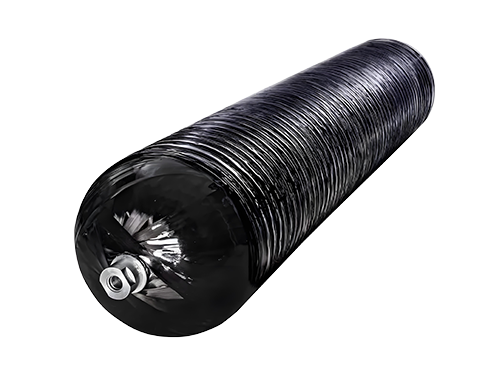Hydrogen storage bottle
Category: Energy storage equipment
The working principle of a hydrogen storage cylinder is to compress hydrogen gas to a high pressure state through a compressor, and then store it in a specific container. According to different application requirements, hydrogen storage tanks can be divided into multiple types, each with its specific materials and design features. For example, Type I hydrogen storage tanks are entirely made of metal, usually steel or aluminum alloy; Type II hydrogen storage bottles have metal lining and partial fiber reinforcement; The Type III hydrogen storage bottle is made of aluminum alloy as the inner liner and wrapped with high-strength fiber composite material on the outside; The IV type hydrogen storage bottle adopts a plastic inner liner and fiber winding structure.
The application fields of hydrogen storage bottles are very wide, mainly including the following aspects:
Transportation: In automobiles and public transportation, hydrogen storage tanks are used to store hydrogen gas and support the operation of fuel cell vehicles. For example, Type III and Type IV hydrogen storage bottles have been practically applied in fuel cell vehicles, especially Type III bottles have been put into actual production and use.
Industrial applications: In the industrial field, hydrogen storage bottles are used to store high-pressure hydrogen gas, supporting various industrial applications such as chemical production and energy storage.
Energy storage: Hydrogen storage bottles can also be used in large-scale energy storage systems by converting excess electricity into hydrogen for storage, and then converting it back into electricity through fuel cells when needed, achieving efficient energy utilization.
With the continuous innovation of new materials and manufacturing processes, the design and performance of hydrogen storage tanks are also constantly improving. For example, the use of carbon fiber makes hydrogen storage tanks lighter, improving their efficiency and safety in practical applications.







